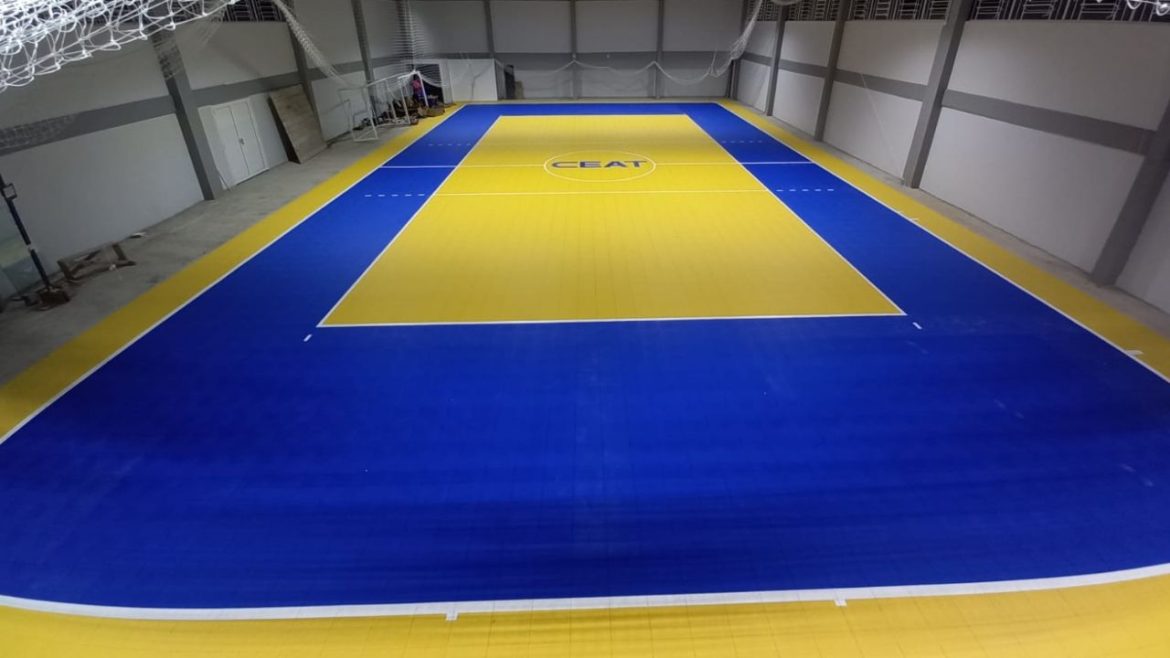Futsal, a type of football played on a smaller ground and is also faster, is on the rise worldwide. As with any construction project, constructing a futsal court requires strategy and finance, whether for leisure purposes, sporting activities within a specific community, or league-standard play.
The cost of developing a futsal varies significantly depending on several parameters. Familiarity with these factors makes it possible to assess the costs and consider the project actions judiciously.
Below are the five key attributes regarding the Futsal Court Cost: Budget-Friendly Court Solutions and construction cost.
Key Factors Influencing the Cost of Building a Futsal Court
1. Type of Surface Material
The most important aspect of the costs of constructing a futsal pitch is determined by the material used on the surface. Take a look at how the selection of the type of surface influences the initial and recurring costs.
- Artificial Turf: Futsal synthetic turf can give a natural look and doesn’t need any maintenance compared to other materials. However, the price range may affect artificial turf, and clients should be cautious because expensive products have better longevity and performance features.
- PVC Flooring: Indoor futsal courts are commonly established on PVC surfaces. These floors are very nice for athletes to perform on because they absorb the impact on the joints well and provide a smooth surface for playing. However, they are a bit expensive compared to other options but trendy and provide exceptional results.
- Acrylic Flooring: Outside futsal courts are often tainted with an Acrylic coating because it performs better in adverse weather conditions and is relatively easy to maintain. Although cheaper than PVC, the price depends on the thickness and the number of layers.
2. Court Size and Dimensions
The size of the court directly affects the cost. The size of a standard futsal pitch is 40*20 meters. Larger courts require more materials, increasing the overall expenses.
Smaller recreational courts have lower costs since less material and labor are required. However, adhering to standard dimensions is crucial for hosting official matches or ensuring a professional-grade playing experience. Ensure your court size fits the available space and intended purpose, as even slight changes in size can significantly impact the budget.
3. Location and Site Preparation
The location of a futsal court significantly influences the price one will encounter when constructing it. The relationship between cost and construction can be volatile, and this will determine how much you will spend.
- Land Costs: Buying land to use for the court will be a major expense. Land costs are normally higher in urban regions than in rural regions.
- Site Preparation: Site development involves removing waste materials, grading soil, and supporting work.
- Accessibility: Remote locations may incur additional transportation and logistics costs for materials and labor. Conversely, urban sites may face higher regulatory fees or restrictions.
4. Additional Features and Amenities
Including extra features and amenities can significantly increase the cost of building a futsal court. These enhancements add value but should be carefully considered based on budget and priorities.
- Lighting: Lighting is important if the game is in the evening or during the night. Floodlights use LED technology and have the advantage of efficiency, but they can be somewhat costly.
- Fencing: Different concepts are used to organize the activity; for instance, placing fences around the court protects a player when getting the ball and keeps the ball on the court. The price mainly depends on the material type used for fencing.
- Seating and Shelters: Seating stands for the viewers, and burgs for the players offer a much more engaging experience for the viewers but carry with it cost implications, so this can be optional.
- Drainage Systems: Water drainage is important for outdoor courts because accumulated water causes standing water and affects the court surface. This does this, but it must be noted that this increases the expense.
5. Labor and Installation Costs
Another significant factor is the cost of skilled labor and installation services. Hiring experienced professionals ensures the court is constructed to high standards but may come at a premium.
- Local Labor Rates: Labor costs vary depending on the region. Urban areas often have higher labor rates compared to rural locations.
- Installation Complexity: Courts with advanced features, such as PVC flooring or intricate drainage systems, require specialized installation, which increases costs.
- Timeframe: Expedited construction projects may require additional resources and manpower, driving up labor costs.
Conclusion
Constructing a futsal court can be very good for healthy physical activity, entertainment, and strengthening bonds. However, it is equally helpful to comprehend which aspects determine costs, as this can help make a budget.
Therefore, it is concluded that, based on the evaluations of the above-given factors and matching the latter with the specified goals, it is possible to design a futsal court that will provide good value and improve the quality of the play.

